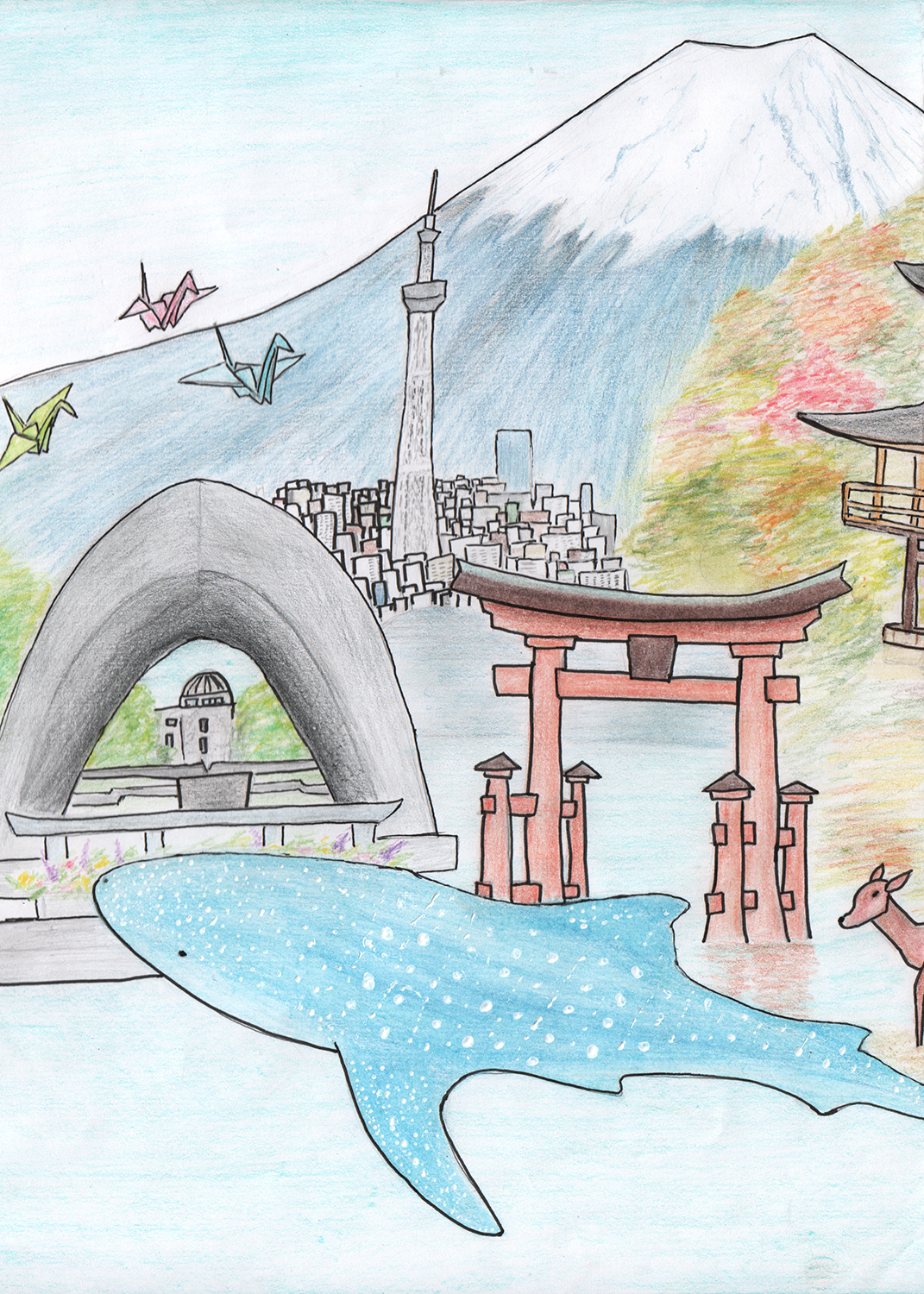Nihon Go!

The purpose of this trip was to allow students the opportunity to explore a foreign country, immerse themselves in a new culture, and practice their Japanese. The students visited many places including the Hiroshima Peace Memorial, various temples and shrines, and had a free day in Tokyo.
On the first day of the trip, students visited the Hiroshima Peace Memorial, a site dedicated to preserving the memory of those affected by the atomic bombing over 70 years ago. “What happened there was something valuable for us to learn and important for us to see, rather than just learning it from textbooks or in class,” said senior Ty Minatoya. The students had the rare opportunity of meeting Keiko Ogura, a bombing survivor who was eight years old at the time of the bombing. Ogura recounted her experience on that fateful day and the horrors that followed. She explained the different ways people were victimized and the prejudices against those affected by the bomb’s radiation. However, despite the trauma she experienced as a child, Ogura spoke of peace and her hope that the suffering the victims endured would help prevent further nuclear warfare.
Another favorite among the students was staying at the ryokan, a traditional Japanese inn. Each room of the ryokan was lined with tatami or “straw mats”, and instead of beds, futons or “quilted mattresses” are rolled out on the floor each night. Students were also given a yukata, a casual summer kimono, to wear around the hotel. At the ryokan, a traditional, multi-course dinner of various seafoods, meats, pickled vegetables, tofu, and soup was served. After dinner, students had the freedom to explore the tranquil gardens or take a dip in the onsen, a natural hot springs and public bath. Continued on next page In Japanese culture, public bathing is a common practice and is often seen as a bonding experience. Before participants enter the onsen, they are required to take off all their clothes and store it in a locker area. Then they must wash and rinse their body completely using the provided shower facilities. “The onsen is not that bad once you get over the whole bathing with other people part,” stated senior Kacie Yoshida. One visit to the onsen was not enough for most students, as many chose to go multiple times.
[one_half]Social Studies teacher Robert Weismantel
[/one_half]Tokyo was another favorite destination of the trip. Utilizing the local trains, the students were given the entire day to explore and shop in the vast city with their chaperone groups. Many students visited multiple districts within Tokyo such as Harajuku, Shibuya, and Shinjuku. Senior Nicholas Kanno stated, “My favorite city was Harajuku because it had so many shops and a lot of different things for us to do.” Robert Weismantel’s chaperone group visited a fish therapy center, where patients placed their feet in a tank as fish ate off dead skin. Other groups visited a hedgehog-themed cafe that allowed guests one hour of playtime with the prickly critters.
The day in Tokyo gave the HBA students valuable practice in Japanese transportation and currency. “I learned I should get a coin purse,” stated senior Joshua Joo. “The coins here are not like the ones in America where they have small values. There’s like a 500 coin and a 100 coin which is like five dollars and one dollar, which in America we have bills for. I always had to go through my ziploc bag of coins and it was really annoying. I guess the lesson is to study about the place before
you go.”
While the students visited numerous places, the highlight of the trip was Doshisha Kori high school. At the school, students spent the day participating in cultural activities such as calligraphy, kendo or “Japanese sword fighting”, and a tea ceremony. “It’s not just drinking tea; it’s the experience,” said Weismantel. “When we were going to all these places and meeting different people, having that mindset [about experiences] is very important because you know you’re not going to see them again, so the experience you have, that moment, is something you can treasure.”
The students then attended class with a fellow Japanese student. “It surprised me how well they spoke English,” said junior Dru Pang. “Some of the students were almost fluent in English, and when I was trying to tell them something in Japanese, it was not close to fluent.” The day at Doshisha Kori ended with enichi activities, or summer festival games, such as spinning tops, shooting cork guns, and fishing for water balloon yoyos. The Doshisha Kori students wrapped up the day with a surprise performance from the school’s student led band. “Doshisha Kori did so much for us this year,” said Japanese teacher and Japan trip organizer Chie Watanabe.
For the past six years, Doshisha Kori and HBA have partnered together in a pen pal program. After the trip, HBA Japanese language students were paired with Doshisha Kori students, and for a few weeks, they will exchange emails to get to know one another in preparation for when the Doshisha Kori students visit HBA in the spring. “We can teach them [about our] culture, like making leis, teaching hula, and making Spam musubi,” said Watanabe. “I hope that [our] students will continue using Japanese. Our trip [hasn’t really] finished yet.”
Photographs Chie Watanabe, Elena Yoo & Evan Ebesu (‘17)
